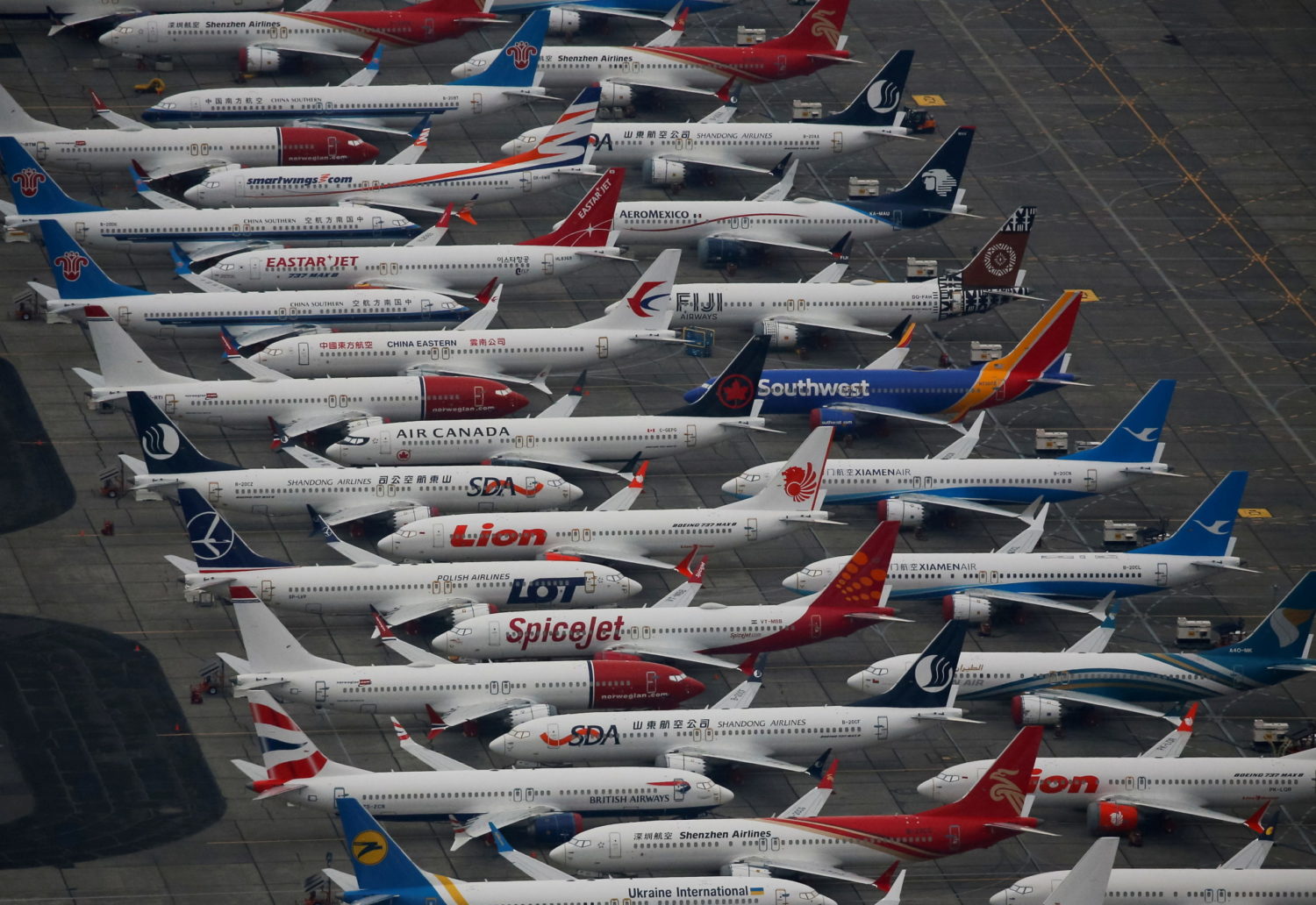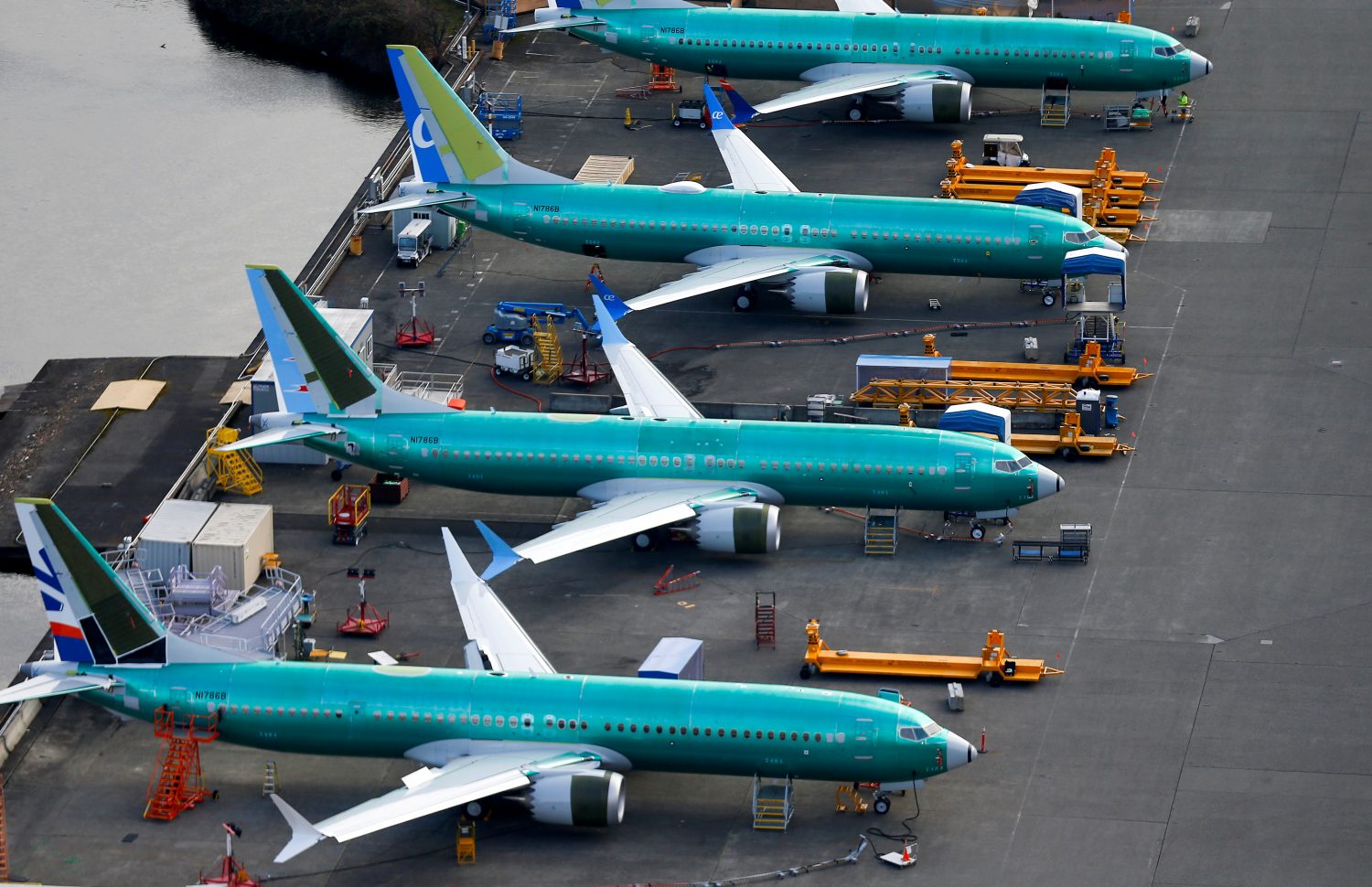
By David Shepardson and Eric M. Johnson
WASHINGTON/SEATTLE (Reuters) – After nearly two years of scrutiny, corporate upheaval and a standoff with global regulators, Boeing Co won approval on Wednesday from the U.S. Federal Aviation Administration to fly its 737 MAX jet again after two fatal disasters.
The FAA detailed software upgrades and training changes Boeing must make in order for it to resume commercial flights after a 20-month grounding, the longest in commercial aviation history.
The 737 MAX crashes in Indonesia and Ethiopia killed 346 people within five months in 2018 and 2019 and triggered a hailstorm of investigations, frayed U.S. leadership in global aviation and cost Boeing some $20 billion.
The U.S. plane maker’s best-selling jet will resume commercial service facing strong headwinds from a resurgent coronavirus pandemic, new European trade tariffs and mistrust of one of the most scrutinized brands in aviation.
Families of the Ethiopian crash victims said in a statement on Wednesday that they felt “sheer disappointment and renewed grief” following the FAA’s decision to return the aircraft to service.
“Our family was broken,” Naoise Ryan, whose 39-year-old husband died aboard Ethiopian Airlines flight 302, said on Tuesday.
The 737 MAX is a re-engined upgrade of a jet first introduced in the 1960s. Single-aisle jets like the MAX and rival Airbus A320neo are workhorses that dominate global fleets and provide a major source of industry profit.
Of the U.S. airlines with 737 MAX jets, American Airlines plans to relaunch the first commercial MAX flight since the grounding on Dec. 29, followed by United Airlines in the first quarter of 2021 and Southwest Airlines in the second quarter next year.
Leading regulators in Europe, Brazil and China must issue their own approvals for their airlines after independent reviews, illustrating how the 737 MAX crashes upended a once U.S.-dominated airline safety system in which nations large and small for decades moved in lock-step with the FAA.
When it does fly, Boeing will be running a 24-hour war room to monitor all MAX flights for issues that could impact the jet’s return, from stuck landing gear to health emergencies, three people familiar with the matter said.
Shares jumped in premarket trading and were on track for their highest level since June.
LONG RUNWAY AHEAD
FAA Administrator Steve Dickson signed an order lifting the flight ban early on Wednesday and the agency released an airworthiness directive detailing the required changes.
“We’ve done everything humanly possible to make sure” these types of crashes do not happen again, Dickson told Reuters, saying he felt “100% confident” in the plane’s safety.
The FAA is requiring new pilot training and software upgrades to deal with a stall-prevention system called MCAS, which in both crashes repeatedly and powerfully shoved down the jet’s nose as pilots struggled to regain control.
The FAA, which has faced accusations of being too close to Boeing in the past, said it would no longer allow Boeing to sign off on the airworthiness of some 450 737 MAXs built and parked during the flight ban. It plans in-person inspections that could take a year or more to complete, prolonging the jets’ delivery.
Boeing is scrambling to keep up maintenance and find new buyers for many of its mothballed 737 MAXs after receiving cancellations from their original buyers. Demand is further sapped by the coronavirus crisis.
Even with all the hurdles, resuming deliveries of the 737 MAX will open up a crucial pipeline of cash for Boeing and hundreds of parts suppliers whose finances were strained by production cuts linked to the jet’s safety ban.
Numerous reports have faulted Boeing and the FAA on the plane’s development. A U.S. House of Representatives report in September said Boeing failed in its design and development of the MAX, and the FAA failed in its oversight and certification.
It also criticized Boeing for withholding crucial information from the FAA, its customers, and pilots including “concealing the very existence of MCAS from 737 MAX pilots.”
The chief executive of Boeing urged staff to speak up whenever they see behavior going against values of safety, quality and integrity. “We have implemented a series of meaningful changes to strengthen the safety practices and culture of our company,” Dave Calhoun told employees in a letter.
The House on Tuesday unanimously passed a bill to reform how the FAA certifies airplanes, while a Senate panel is to consider a similar bill on Wednesday.
Boeing faces lawsuits from crash victim families.
(Reporting by Eric M. Johnson in Seattle, Tracy Rucinski in Chicago, David Shepardson in Washington, Allison Lampert in Montreal and Jamie Freed in Sydney; Editing by Matthew Lewis and Nick Zieminski)












